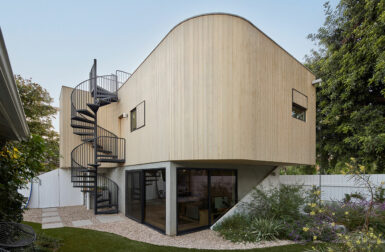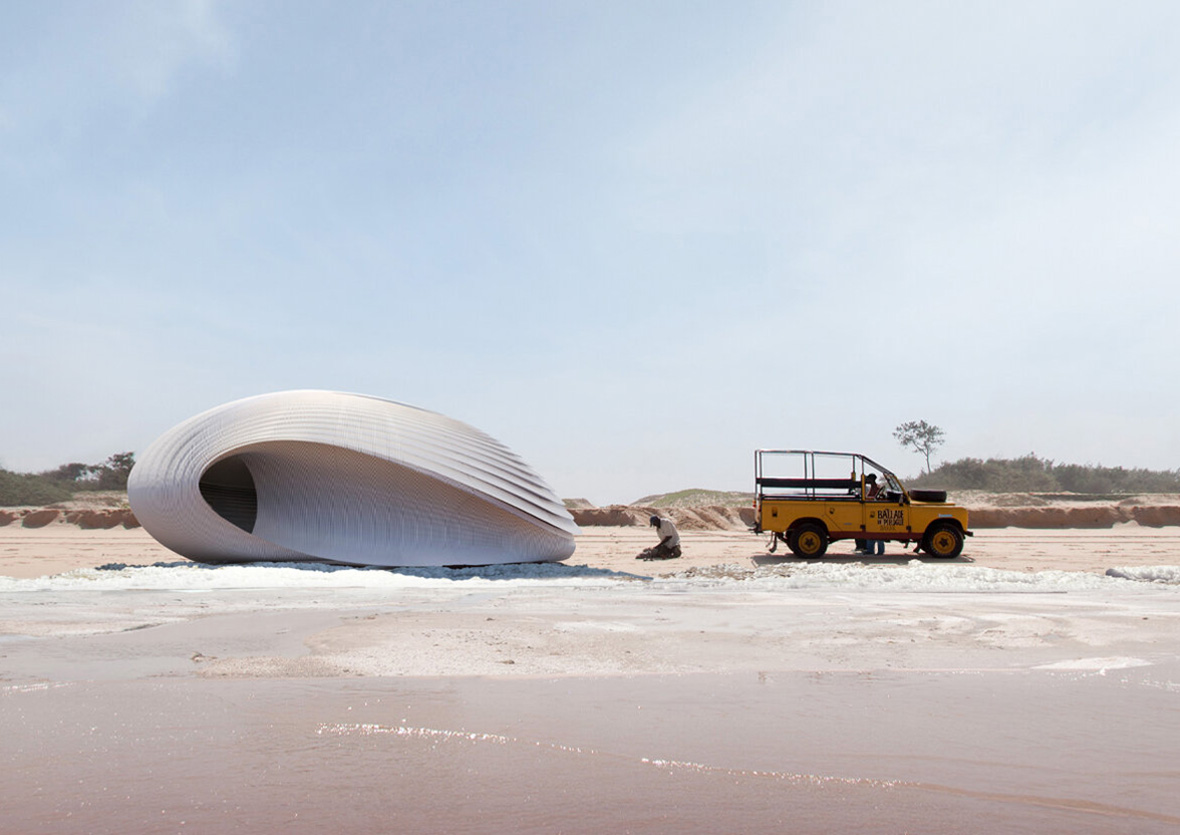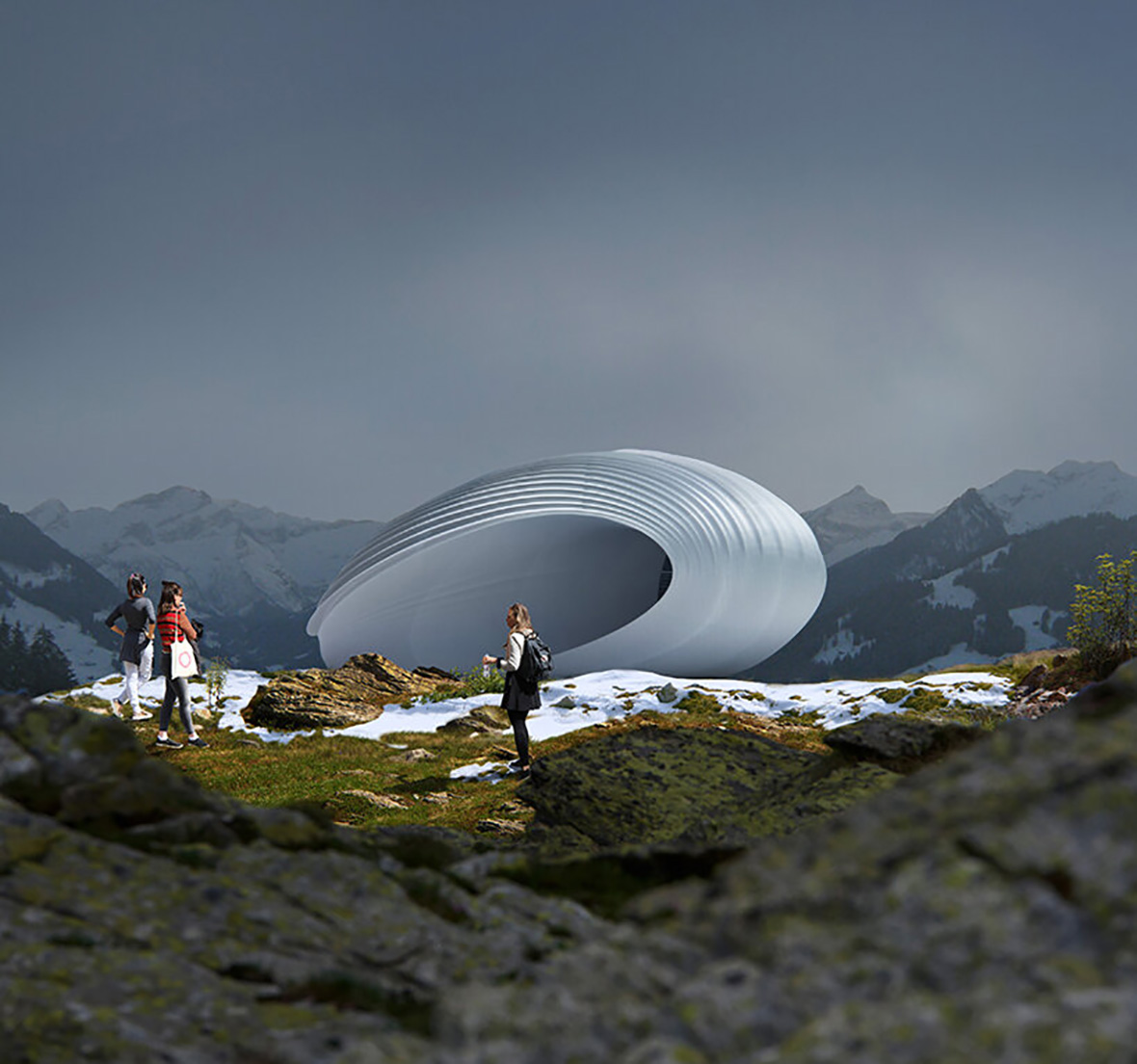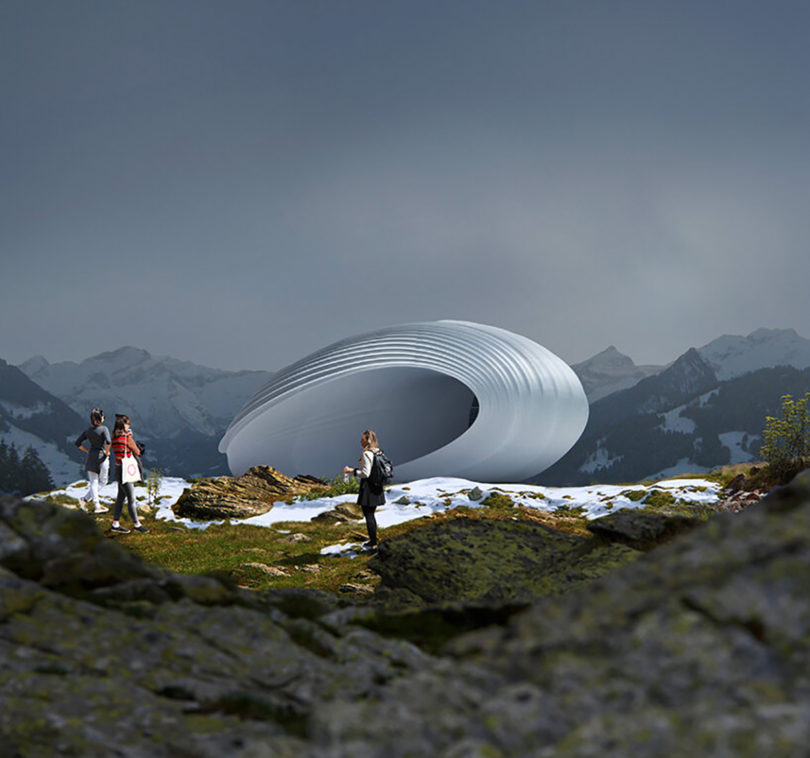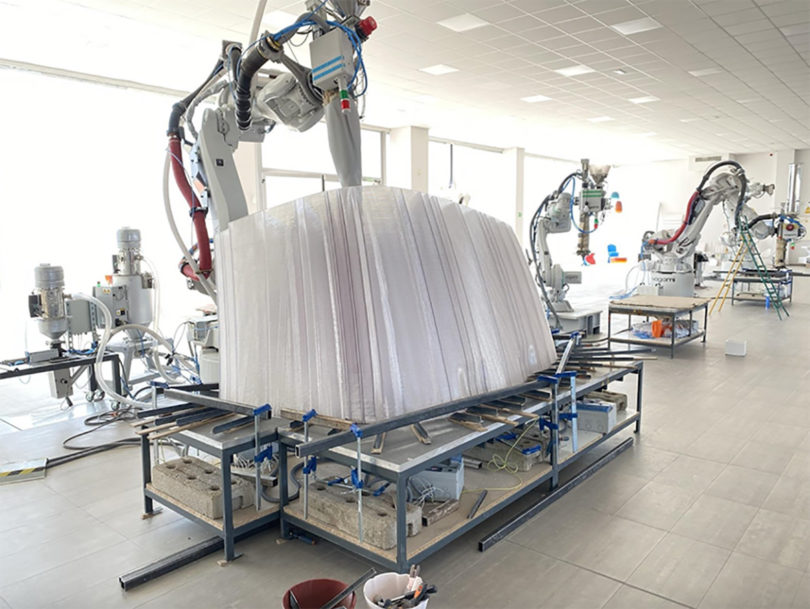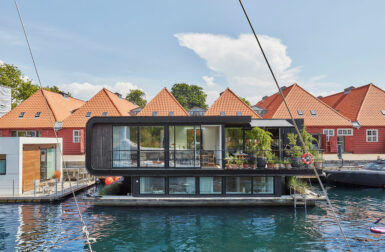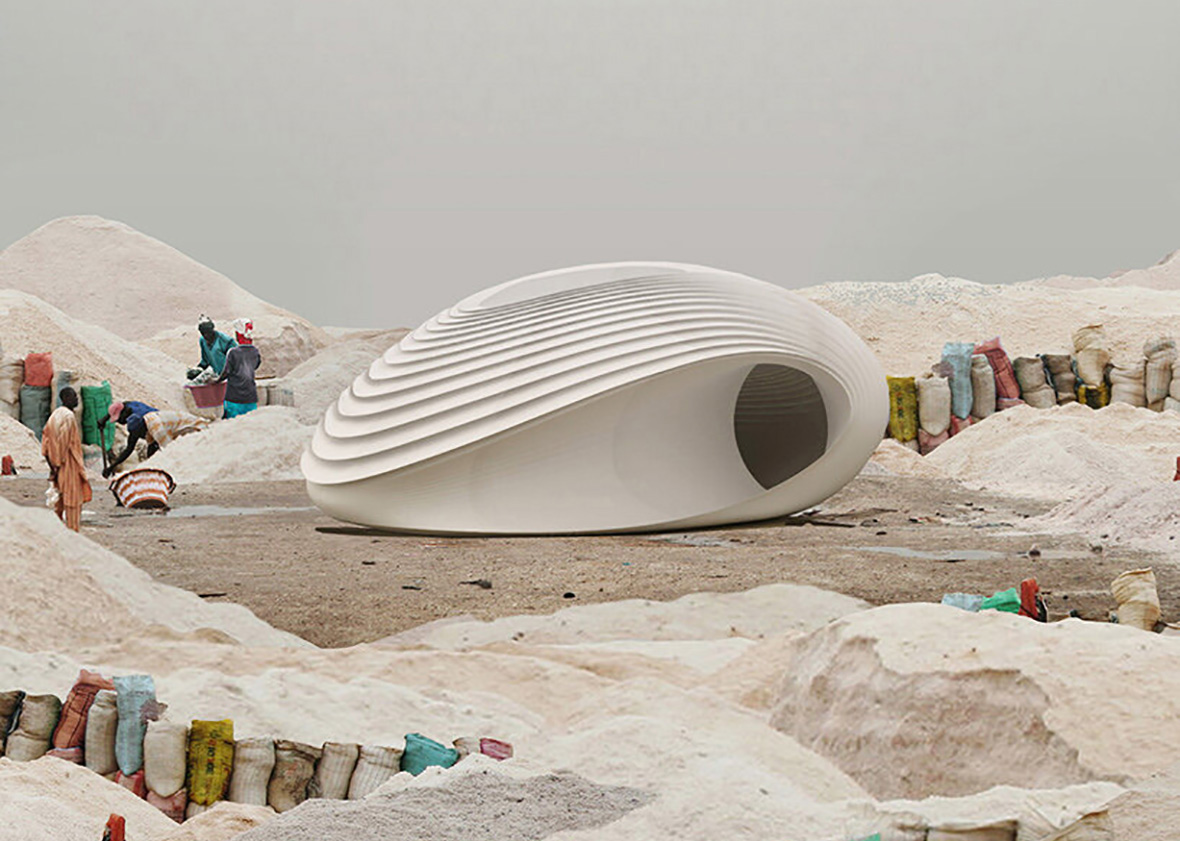
The effects of climate change paired with the mounting accumulation of global plastic waste will undoubtedly change the landscape and scope of architecture in the decades ahead. Structures, including housing, will need to be adaptive not only in their intended form, but also in the manufacturing and material sourcing process. Noting these challenges, a 3D-printed prototype pavilion designed by architecture studio Hassell, in partnership with 3D-printing studio Nagami and creative collective to.org, propose utilizing a material that isn’t dwindling, but mounting in availability with every passing day.
Inspired by Qarmaq, a type of inter-seasonal, single-room family dwelling long used by the Central Inuit of Northern Canada, this concept interprets the indigenous architecture into a 3D-printed pavilion constructed with recycled plastic. Engineered for inclement weather and harsh local climates around the globe – in heat or in extreme cold – the small habitat combines traditional indigenous solutions with technological adaptations to permit modifications as required in response to the structure’s site.

In its most extreme iteration the pavilion will be hermetically sealed with its gently grooved exterior designed to collect snow to create natural insulation similar to the traditional igloo.
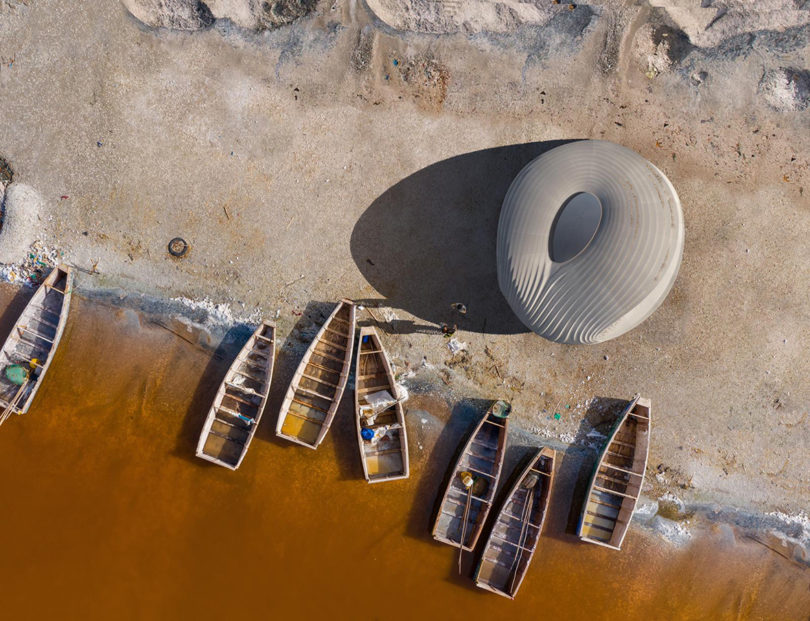
From overhead, the pavilion’s ridged design with a center skylight resembles a Danish vanilla ring butter cookie, but something more like a marine bivalve mollusk from ground level.
The shell-like design utilizes plastic refuse as a resource for construction, an idea born from conversations between Hassell’s head of design, Xavier De Kestelier, and Manuel Jimenez Garcia, the founder of Nagami, a 3D-additive manufacturing studio.
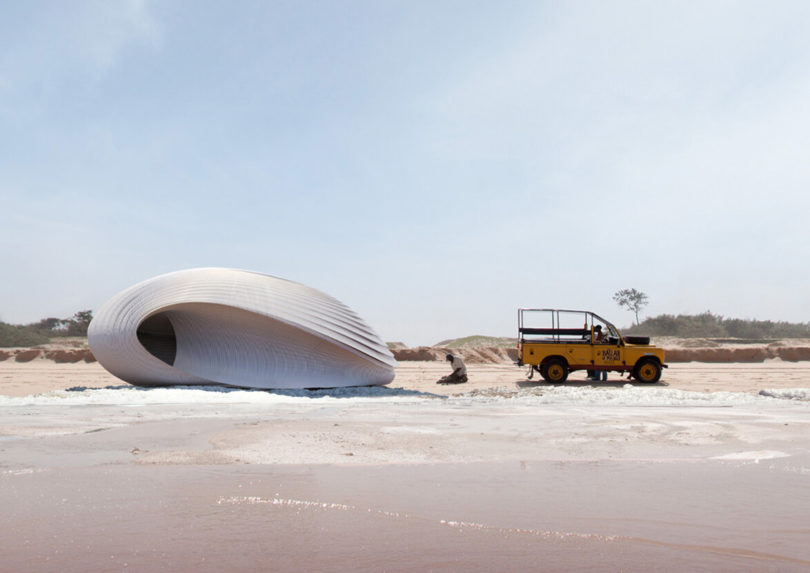
In warmer climates where insulation from overbearing heat is a concern, the Pavilion 1 can be adapted to use its overlapping fin design for passive cooling and cross ventilation, as well as water harvesting.
“The implications of 3D printing at this scale are huge for architecture and we hope we can apply this aspect of adaptability across projects,” notes De Kestelier, “We wanted a pavilion that will be able to exist completely off the grid and adapt to local climatic challenges and conditions to create as low as possible embodied and operational carbon footprint.”
Additionally, Nachson Mimran, co-founder & creative executive officer of to.org notes the project’s aim to reuse already processed petroleum-based material as “an inexhaustible resource” is vital in the realization of a “circular economy [to] reduce pollution and reverse the effects of climate change.”

Pavilion 1 is 3D printed at full-scale, using minimum energy with the main structure comprising 24 separate pieces easily transported and assembled on-site.
The Pavilion 1 in its varied imagined applications is currently only in a proof of concept state, with to.org currently seeking partners to invest in its future production and work toward reproducible scalability.
Manuel Jimenez Garcia, founder of Nagami hopes the project note only radicalizes the construction industry, but also inspires future generations of architects to invest and explore eco-innovation as a plausible element of designing the habitats of the future.
